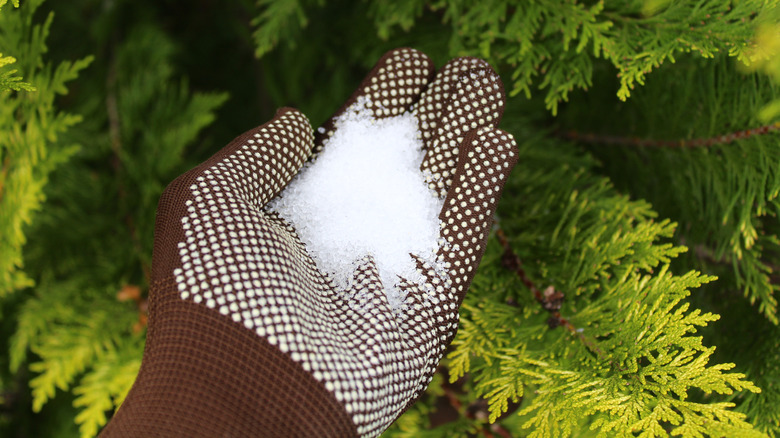What Plants Don't Like Epsom Salt? Tips for Much Better Plant Care
What Plants Don't Like Epsom Salt? Tips for Much Better Plant Care
Blog Article
Find Out About the Certain Plants That Are Adversely Influenced by Epsom Salt Application
Epsom salt, a preferred household treatment for numerous horticulture problems, is usually praised for its helpful results on plant growth. Nonetheless, not all plants respond favorably to its application. Comprehending the details plants that can be adversely influenced by Epsom salt is crucial for any gardener seeking to enhance their plant treatment routine. Roses, tomatoes, azaleas, rhododendrons, and peppers are just a few examples of plants that may not respond well to Epsom salt. The factors behind these damaging results and just how to mitigate them are necessary knowledge for maintaining a prospering yard.
Roses

Roses, especially delicate to modifications in their setting, can be adversely influenced by the application of Epsom salt. While Epsom salt is commonly made use of as a plant food to promote plant development and improve blooming, roses are one of the plants that do not react well to its application. The high magnesium material in Epsom salt can disrupt the uptake of various other vital nutrients by the rose plants, leading to shortages that materialize as yellowing leaves or stunted growth.

Tomatoes
Tomatoes, recognized for their adaptability in culinary applications, can show negative impacts when revealed to Epsom salt because of their particular nutrient requirements. While Epsom salt is usually promoted as a solution for different plant concerns, including bloom end rot in tomatoes, its application can lead to damaging end results otherwise utilized carefully. Tomatoes are hefty feeders that call for a balanced consumption of nutrients, specifically calcium, to grow. Excessive Epsom salt, which is magnesium sulfate, can interrupt the fragile nutrient equilibrium required by tomatoes, potentially causing shortages in other necessary nutrients like calcium. This imbalance might show up in symptoms such as stunted growth, yellowing leaves, or also minimized fruit manufacturing in tomatoes. When taking into consideration the use of Epsom salt on tomatoes, it is critical to stick to recommended application prices and soil screening to protect against unintended consequences on the total health and wellness and efficiency of these beloved garden plants.
Peppers
Peppers, admired for their different colors and degrees of spiciness, can demonstrate sensitivity to unfavorable impacts from Epsom salt when not used with treatment and consideration for their details nutritional needs. what plants don't like epsom salt. Peppers, belonging to the Solanaceae family members, require a fragile balance of nutrients to prosper. While Epsom salt is known to enhance magnesium levels in plants, too much application can interrupt this balance, bring about damaging impacts on pepper plants
When peppers are subjected to high degrees of magnesium from Epsom salt, it can interfere with the plant's capability to soak up other essential nutrients like calcium and potassium. This inequality might manifest in signs such as fallen leave discoloration, stunted growth, and lowered fruit manufacturing. Furthermore, the too much magnesium can modify the soil pH, additional aggravating nutrient uptake issues for peppers.

Rhododendrons
Provided the sensitivity of certain plant types to discrepancies caused by Epsom salt, it is vital to take into consideration the effect on click now Rhododendrons, which likewise need certain nutrient degrees to grow. Rhododendrons are acid-loving plants that prefer acidic soil problems with a pH array in between 4.5 and 6.0. Epsom salt, chemically referred to as magnesium sulfate, can modify the dirt pH and interfere with the delicate balance of nutrients vital for Rhododendron health.

To preserve the ideal growth and wellness of Rhododendrons, it is critical to prevent the unplanned use of Epsom salt and instead concentrate on supplying the particular acidic soil conditions and nutrients that these plants need for growing.
Azaleas
Azaleas, understood for their dynamic blossoms and broad variety of colors, are decorative shrubs that come from the Rhododendron category. These preferred flowering plants are often found in parks, yards, and landscapes due to their appeal and flexibility. Azaleas are delicate to modifications in dirt pH levels, which can substantially affect their development and general wellness. While Epsom salt is commonly utilized as a remedy for magnesium deficiency in plants, its application to azaleas can have adverse effects.
Azaleas favor a little acidic dirt problems, and an unwanted of magnesium from Epsom salt can interrupt this equilibrium, leading to nutrient imbalances and potential toxicity issues. The incorrect application of Epsom salt can result in stunted growth, yellowing of leaves, and general decline in the health and wellness of azaleas.
Final Thought
In final thought, it is essential to be familiar with the specific plants that can be negatively influenced by the application of Epsom salt. Roses, tomatoes, azaleas, rhododendrons, and peppers are some examples of plants that might not gain from Epsom salt and might even suffer damage. It is crucial to research study and recognize the needs of each plant types prior to utilizing Epsom salt as a fertilizer to guarantee their wellness and health.
Recognizing the particular plants that can be detrimentally influenced by Epsom salt is critical for any gardener looking to enhance their plant treatment regimen. While Epsom salt is generally utilized as a plant food to advertise plant development and improve flowering, roses are one of the plants that do not respond well to its application.Too much use of Epsom salt can likewise result in an accumulation of salts in the soil, leading to root damage and dehydration of the rose plants. While Epsom salt is known to enhance magnesium degrees in plants, too much application can disrupt this balance, leading to negative results on pepper plants.
The high salt content visit this website in Epsom salt useful source can likewise dry out Rhododendron origins, creating more stress and anxiety and damage to the plant. (what plants don't like epsom salt)
Report this page